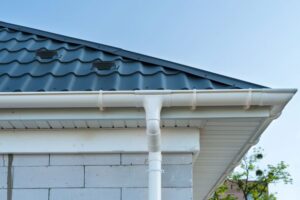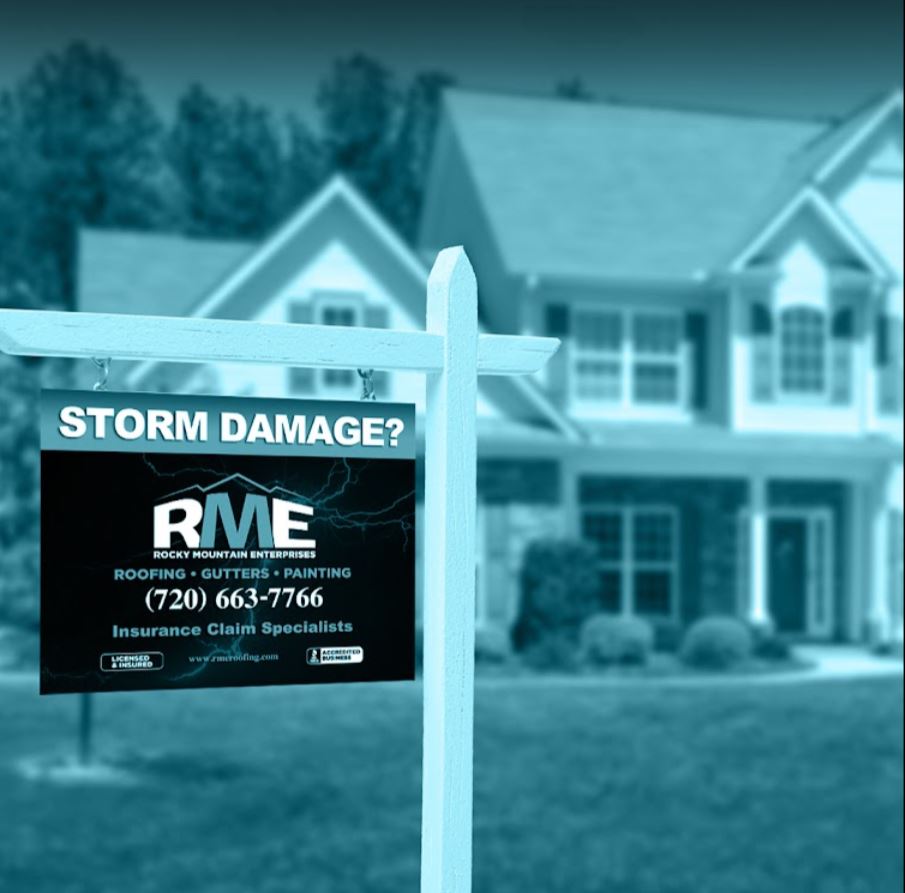Gutters are designed to divert water away from your home’s foundation and into downspouts. This helps prevent damage to your home and keeps you dry during heavy rains. If you don’t have gutters, however, water could potentially cause severe damage to your home. In fact, according to the Insurance Information Institute, up to half of all insured homes experience some sort of water damage over a year. Here are three reasons why having gutters installed on your roof is essential.
-
Gutters Protect Your Home From Water Damage

When water runs off your roof, it flows along the exterior walls of your home, where it can collect and pool. Over time, this pooled water can seep into interior areas like basements and crawl spaces. Once there, the moisture can cause mold growth and rot wood framing members, which can lead to structural problems and even collapse. Installing guttering prevents water from collecting against your home and allows it to drain properly.
-
Gutters Keep You Dry
If you live in an area prone to flooding or heavy downpours like Colorado, you know how important it is to keep your home dry. But installing gutters can help reduce the amount of water that collects on your roof. Water that falls onto your roof drains quickly through the gutter system and out of sight, protecting your property from damage caused by standing water.
-
Gutters Are Easy To Maintain
Installing gutters isn’t difficult, but it does require some skill and expertise. Most homeowners choose to hire professionals because it takes training and practice to install gutters correctly. Professional installation ensures that gutters fit well and function efficiently, making sure that water doesn’t build up against your home and causing damage.
Gutter Systems Are Essential
Gutters aren’t just for rainwater. They’re used to divert water away from roofs and into downspouts. This helps prevent water damage to floors, walls, ceilings, furniture, and electronics. Most gutters are installed above the eaves. Some homeowners install gutters along the entire length of the roof, while others only put them over the highest points of the house.
The reason you don’t want water to pool up against the roof is because it could cause leaks. If there’s too much water behind the shingles, it can seep under the shingle and cause rot. Water can also run along the edge of the roof and drip onto the ground, causing erosion and damage to landscaping.
In Englewood, Colorado we can see heavy rains occur, so you’ll probably want to add some sort of gutter protection to keep out debris, leaves, and pine needles. Gutters are typically made of aluminum, copper, or plastic. Aluminum is usually the cheapest option, but it’s also the most likely to corrode. Copper is durable, but it doesn’t work well with ice dams. Plastic is better suited for areas with freezing temperatures like Colorado.
Popular Gutter Designs
-
Box Gutters
Box gutter systems are used on buildings where roofing materials are installed over wood framing members. They provide drainage along with protection against water penetration. In addition, they serve as decorative elements on the building. Box gutters are typically constructed of metal. There are several types of box gutters including single-wall, double-wall, and triple-wall.
-
Fascia Gutters
A fascia gutter is a type of rainwater drainage system that runs along the edge of a roof. These systems are commonly used in residential construction because they are easy to install and maintain. They are also popular among DIYers because they don’t require professional installation. However, you’ll need to do some research to make sure you’re installing one correctly.
The fascia gutter works by diverting water away from the sides of the house, where it could cause damage. Water flows down the slope of the roof and over the gutter, where it drains off the roof. This prevents water from pooling on the side of the house.
In addition to keeping water out of the home, fascia gutters also provide a decorative element. If you want to add a little character to your home, consider adding a fascia gutter.
-
Square Gutters
Gutters are usually installed along the roofline of a building. They are typically found in residential properties because of the weight of water runoff. There are different types of gutters, including round, flat, and square. Round gutters are most common, while square gutters are less common. In both cases, they are designed to catch rainwater and channel it away from the house.
Square gutter systems are often preferred over round ones due to their durability and longevity. However, they require some maintenance. If you live in an area where there is heavy rainfall, consider installing a square gutter system. You can find one online or at a home improvement store.
-
Round Gutters
The round gutter is one of the most popular types of fascia gutters. They are easy to install because they don’t require cutting into the fascia board. However, some people prefer square gutters because they look cleaner. You’ll find both styles in metal and vinyl.
RME Gutter Services
Gutter Inspections
At RME Roofing we always perform a thorough inspection of your home’s exterior, including the gutters and downspout systems. During this process, we’ll make sure everything looks good and that there aren’t any problems that could lead to leaks later on.
Gutters and downspouts are often overlooked during inspections because homeowners don’t think about them much. But they play a huge role in keeping rainwater away from your house. And if you notice anything out of place or something that doesn’t seem quite right, it’s important to bring it to the attention of your RME Roofing expert.
The best way to ensure your gutters are working properly is to contact RME Roofing and schedule an annual inspection. We will check the slope of each gutter and downspout, making sure they’re free of obstructions, and looking for signs of damage or leaking.
Gutter Cleaning
Roof maintenance involves cleaning out the vents, chimneys, skylights, and flashings. These are the places where most problems occur. In addition to inspecting the exterior of the building, we’ll want to check the interior. Look for signs of leaks, mold growth, and damage to insulation. We’ll make sure there aren’t any loose items inside that might fall and injure someone.
The best way to clean your gutters is to hire a professional at RME Roofing. We know how to inspect the gutter system, what parts need replacing, and how to properly repair damaged sections. Our gutter technicians will provide you with a written estimate, including labor costs, materials used, and the expected completion date.
Gutter Maintenance and Roof Repair
A common problem homeowners face is when rainwater flows over the edges of the roof, it collects in valleys where the slope meets the roof. Water then continues down the roof and into the house. If you’ve ever seen a leaky roof, you know how frustrating it is. You’ll see water dripping from places like around windows, vents and skylights. This is usually caused by improper installation of flashing, which prevents water from getting inside.
If you’re seeing water coming out of the roof, check to make sure you don’t have a broken pipe or damaged chimney cap. Then look for signs of damage to the shingles or flashing. Any holes or missing pieces are potential sources of water intrusion. Next, take a close look at the fascia, the board that runs along the bottom edge of the roof. Look for gaps or cracks that could allow water to enter. Finally, check the gutters themselves. Make sure they’re securely attached to the fascia and properly positioned. If you’re having issues with your roof’s gutter system, contact RME Roofing, we’ll send an expert out and have them inspect your gutter system.

